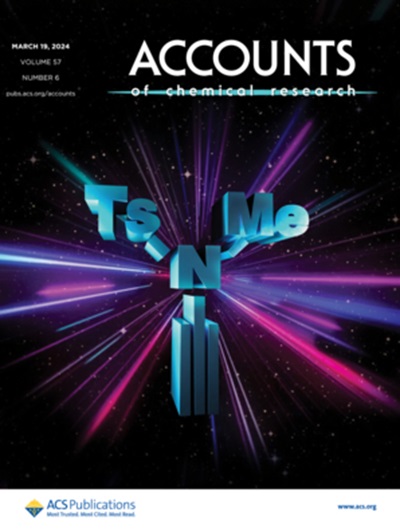Multicomponent Metallacages via the Integrative Self-Assembly of Pt(II) Nodes with Multiple Pyridyl and Carboxylate Ligands
IF 16.4
1区 化学
Q1 CHEMISTRY, MULTIDISCIPLINARY
引用次数: 0
Abstract
In recent years, multicomponent self-assembly has emerged as a pivotal strategy in supramolecular chemistry, enabling the construction of artificial systems with enhanced functionalities that surpass those of individual molecular components. These assemblies have garnered significant interest due to their potential applications in molecular recognition, catalysis, and biomedical engineering. However, achieving precise control over the assembly process remains a significant challenge, as increased structural complexity often results in thermodynamic mixtures, limiting their practical applications. In this context, metal-coordination-driven multicomponent self-assembly has emerged as a promising strategy, as the moderate strength and good directionality of metal–ligand bonds ensure the formation of discrete supramolecular architectures with well-defined structures and geometries. Notably, the integration of pyridyl and carboxylate donors with cis-Pt(II) nodes offers an effective approach for constructing multicomponent metallacages. This method is particularly attractive due to its ability to enable precise heteroleptic assembly, along with the accessibility and tunability of the ligands, which impart desirable photophysical properties and potential anticancer activities.

铂(II)节点与多个吡啶和羧酸配体集成自组装的多组分金属镀层
近年来,多组分自组装已成为超分子化学中的一种关键策略,使构建具有超越单个分子组分的增强功能的人工系统成为可能。这些组件由于其在分子识别、催化和生物医学工程方面的潜在应用而获得了极大的兴趣。然而,实现对装配过程的精确控制仍然是一个重大挑战,因为增加的结构复杂性经常导致热力学混合物,限制了它们的实际应用。在这种背景下,金属配位驱动的多组分自组装已成为一种有前途的策略,因为金属配位键的中等强度和良好的方向性确保了具有明确结构和几何形状的离散超分子结构的形成。值得注意的是,吡啶基和羧酸盐给体与顺式铂(II)节点的整合为构建多组分金属镀层提供了一种有效的方法。这种方法特别有吸引力,因为它能够实现精确的异位组装,以及配体的可及性和可调性,这赋予了理想的光物理性质和潜在的抗癌活性。
本文章由计算机程序翻译,如有差异,请以英文原文为准。
求助全文
约1分钟内获得全文
求助全文
来源期刊

Accounts of Chemical Research
化学-化学综合
CiteScore
31.40
自引率
1.10%
发文量
312
审稿时长
2 months
期刊介绍:
Accounts of Chemical Research presents short, concise and critical articles offering easy-to-read overviews of basic research and applications in all areas of chemistry and biochemistry. These short reviews focus on research from the author’s own laboratory and are designed to teach the reader about a research project. In addition, Accounts of Chemical Research publishes commentaries that give an informed opinion on a current research problem. Special Issues online are devoted to a single topic of unusual activity and significance.
Accounts of Chemical Research replaces the traditional article abstract with an article "Conspectus." These entries synopsize the research affording the reader a closer look at the content and significance of an article. Through this provision of a more detailed description of the article contents, the Conspectus enhances the article's discoverability by search engines and the exposure for the research.
 求助内容:
求助内容: 应助结果提醒方式:
应助结果提醒方式:


